
Yunnan Educational Tour
Itinerary at a Glance
| Day | Location | Highlights |
|---|---|---|
| D1 | Kunming (Hotel), Southwest Associated University (SWAU) | Check in; explore SWAU; attend career planning lecture |
| D2 | Yunnanyi Ancient Tea Horse Road, Dali Ancient City | Learn about Tea Horse Road & "Belt and Road"; draw routes; tour Dali Ancient City |
| D3 | Dali Butterfly Spring, Taoyuan Village | Study butterfly ecology; experience Bai culture; learn pottery |
| D4 | Sangu Water Scenic Area, Xinshan Village, Lijiang Ancient Town | Explore Three Parallel Rivers; experience Naxi Dongba culture; tour Lijiang Ancient Town |
| D5 | Lijiang Jade Dragon Snow Mountain, Wenbi School | Visit glacial museum; hike Blue Moon Valley; interact with Naxi students at Wenbi School |
| D6 | Kunming Jinning Flower Base | Explore flower industry chain; participate in flower auction; tour ends |
Trip Highlights
- Connect wartime education spirit with career planning at Southwest Associated University
- Trace trade-cultural links via Ancient Tea Horse Road and Dali Ancient City
- Explore biodiversity through Butterfly Spring and tie-dye experiences
- Study "Three Parallel Rivers" geology and Dongba heritage in Lijiang
- Learn glacier ecology at Jade Dragon Snow Mountain
Tour Essentials

Quality
No Shopping Traps

Group Type
Private

Tour Focus
Culture, Ecology, Ethnic Customs

Accommodation
Nights:5
Best Season
Spring, Summer, Autumn, Winter
Full itinerary for Yunnan Educational Tour
After arriving at Kunming Airport, our driver will greet you at the airport and take you to the pre-booked hotel to complete the check-in procedures. After the journey, you can take a short rest to recharge your energy for the afternoon’s activities.
In the afternoon, students will conduct an in-depth exploration of Southwest Associated University (SWAU). Established as a comprehensive university in Kunming after colleges and universities relocated inland at the start of China’s War of Resistance against Japanese Aggression, SWAU is a symbol of perseverance and academic excellence in modern Chinese history.
Step into SWAU. Under the guidance of instructors, visit the campus layout and main buildings. As you walk, listen to the instructors explain SWAU’s founding background, educational philosophy, and historical contributions. Then, visit the former site of SWAU and its museum to explore how the university’s educational philosophy became a spiritual pillar during the nation’s crisis. Subsequently, attend a career planning knowledge lecture. Through Q&A interactions with instructors, students will reflect on their own career plans. During the teacher-student interaction, instructors will guide students to formulate their own career aspirations by integrating the spirit of SWAU with the dimensions of career planning, followed by sharing and instructor feedback and summaries.
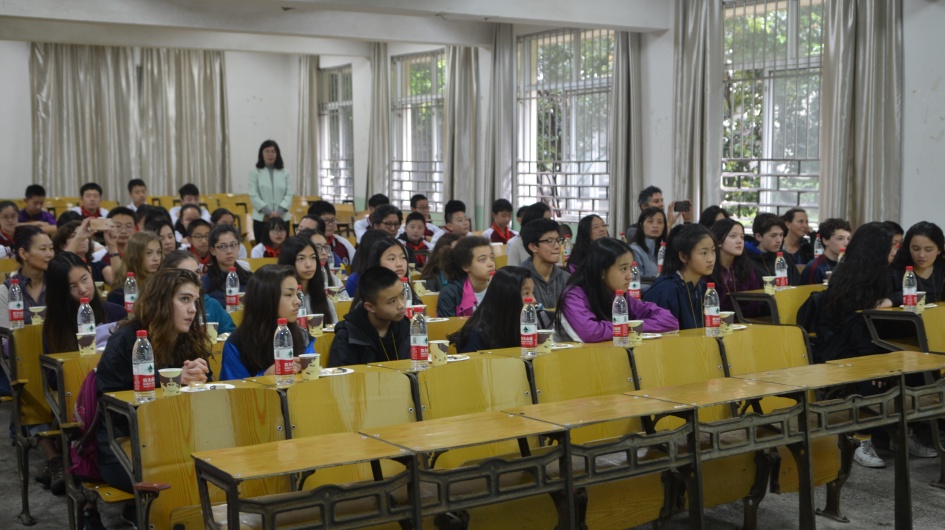 Attending Career Planning Lectures
Attending Career Planning Lectures
Your Journey’s Rewards:
Students gain an in-depth understanding of SWAU’s background, educational philosophy, historical contributions, and its connection to the Chinese national spirit. They listen to the knowledge lecture to learn the importance and basic steps of career planning, while also improving their own expression skills and clarifying their life plans.
Educational Focus:
What profound impact did Southwest Associated University have on China’s education and culture?
Takeaway:
During its eight years in Kunming, SWAU trained 3,325 undergraduate graduates under extremely harsh conditions, providing a large number of scientific research talents for the country. After the victory of the War of Resistance against Japanese Aggression, teachers and students of SWAU strived to oppose civil war and safeguard peace. Their actions and spirit became an important force in various historical periods of China’s revolution, construction, and reform. In terms of cultural influence, it created numerous academic achievements and inherited and innovated forms of national new culture.
Thought Challenge:
How should we better protect and utilize the cultural heritage of Southwest Associated University?
After breakfast, students will depart from Kunming for Yunnanyi. On the way, they will listen to the tour guide explain information about the Yunnanyi Ancient Tea Horse Road, laying the foundation for the subsequent study tour. The Ancient Tea Horse Road scenic area is a place with a long history, carrying rich cultural and economic exchange histories. As an important channel for commercial trade between southwest China and the outside world in ancient times, it has an inherent connection in spirit and function with the modern "Belt and Road Initiative".
After arriving at the Yunnanyi Ancient Tea Horse Road scenic area, the study tour activities officially begin. Students will walk in the scenic area, immersing themselves in the strong historical atmosphere to learn about Yunnanyi’s history, construction, famous figures, and stories. They will listen to instructors explain the Ancient Tea Horse Road and the 8 major routes involved in the "Belt and Road Initiative", then discuss together the role of these routes in economic and cultural development, while recording relevant knowledge in their handbooks during the process. After the knowledge explanation, the practical session will start: under the guidance of instructors, students will draw the 8 major routes by hand, deeply understanding the important role of the "Belt and Road Initiative" in boosting the economy and promoting cultural exchanges through drawing.
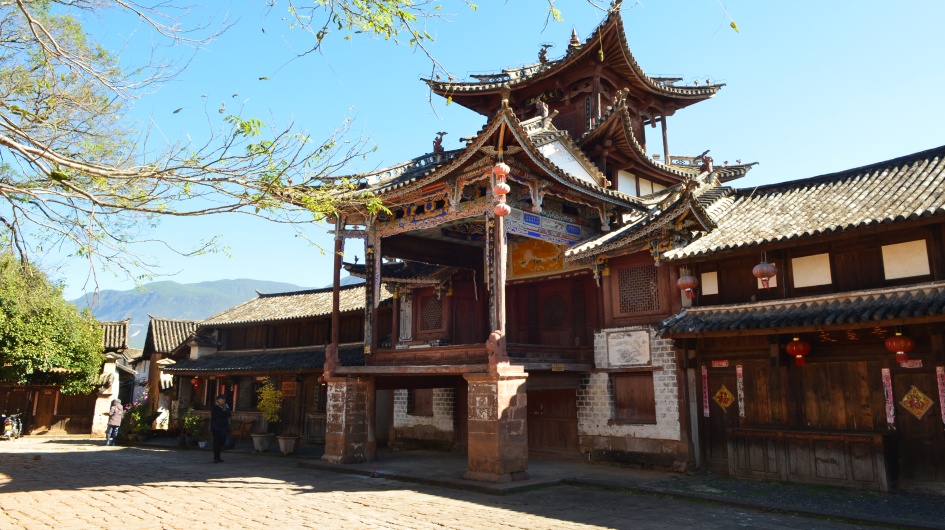 Ancient Tea Horse Road
Ancient Tea Horse Road
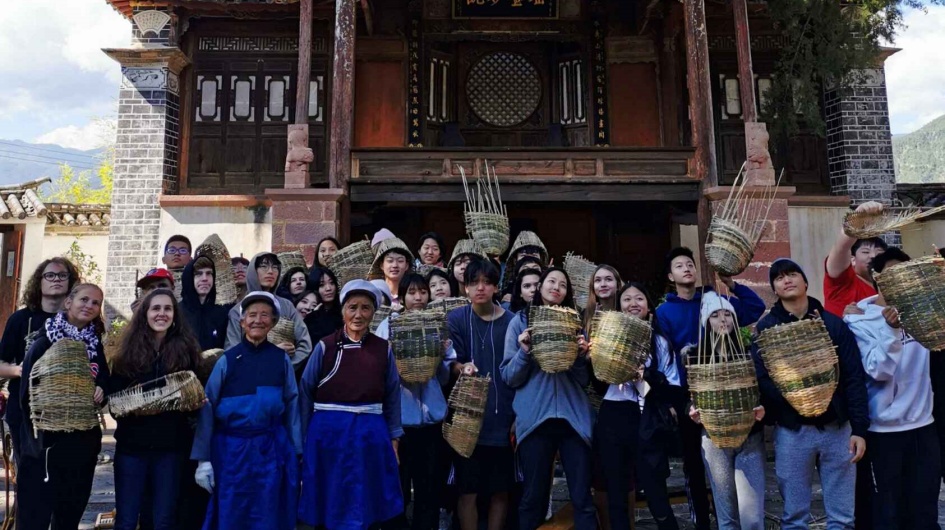 Students Exploring the Ancient Tea Horse Road
Students Exploring the Ancient Tea Horse Road
After concluding the study tour at the Yunnanyi Ancient Tea Horse Road scenic area, students will depart for Dali Ancient City. First built in the 15th year of the Hongwu era in the Ming Dynasty (1382), Dali Ancient City was the political, economic, and cultural center of Yunnan during the Tang and Song dynasties, carrying rich historical, religious, and ethnic cultures. Students will stroll through the ancient city, experiencing the unique checkerboard grid layout of "nine streets and eighteen lanes". They will visit buildings from the Ming and Qing dynasties and feel the strong historical atmosphere.
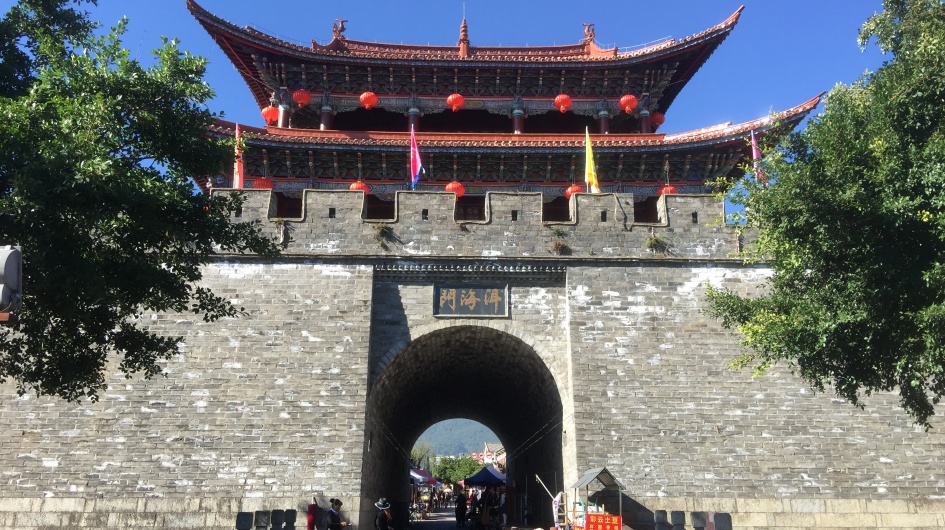 Dali Ancient City
Dali Ancient City
Your Journey’s Rewards:
Through exploring the Ancient Tea Horse Road, students will understand its historical background, routes, and important role in ancient commerce. They will also learn about the origin, development of the "Belt and Road Initiative" and its impact on global economic and cultural exchanges. Additionally, students can further deepen their understanding of geographical and historical knowledge through drawing, and develop abilities in information collection and organization.
Educational Focus:
How does the "Belt and Road Initiative" promote economic development and cultural exchanges through "transportation", "communication", and "exchange"?
Takeaway:
In terms of transportation, the "Belt and Road Initiative" has improved transportation conditions in countries along the routes by building infrastructure such as railways, highways, ports, and airports. This reduces trade costs, improves trade efficiency, thereby promoting the growth of trade and investment and strengthening connections between countries. In terms of communication, the initiative encourages exchange and cooperation in fields such as culture, education, and tourism, enhancing mutual understanding and friendship between people from different countries and regions. In terms of exchange, by promoting trade and investment, the initiative has driven the free flow of goods, services, and capital among countries along the routes, facilitating regional economic integration and common prosperity.
Thought Challenge:
How to inherit the historical wisdom of the Ancient Tea Horse Road in promoting cross-cultural exchanges and apply it to international cooperation practices under the framework of today’s "Belt and Road Initiative"?
In the early morning, students head to the Butterfly Spring Scenic Area to start exploring butterflies and ecological civilization. In the scenic area, they first attend a knowledge lecture that deeply analyzes information about butterflies, through which students can clearly understand the morphological characteristics and survival needs of butterflies at different stages. Subsequently, everyone enters the butterfly breeding base to conduct on-site observation and exploration of the morphological characteristics of each stage of the butterfly's life cycle, their living environment, and complete the relevant record forms. After the observation, students are divided into groups to discuss how to create a suitable living environment for butterflies. Then, they work in groups to draw a diagram of the butterfly ecosystem. During this process, students can deeply realize the fragility and importance of ecological balance.
 Students Taking Notes
Students Taking Notes
Leaving Butterfly Spring, students go to Taoyuan Village to have an in-depth experience of the unique charm of Bai culture. As a residential area of the Bai people, Taoyuan Village retains complete traditional architecture and folk customs, and is a vivid classroom for exploring Bai culture. Under the guidance of the instructor, students first visit the traditional Bai "three-section courtyard with a screen wall" dwellings to understand how they adapt to the climatic characteristics of Dali and the family ethics contained behind them.
Then, Students taste Bai snacks, enjoy Bai songs and dances, experience Bai tie-dyeing production in person, and have an in-depth experience of Bai culture. Next, they taste the Bai three-course tea, and in the taste of the tea soup, they perceive the Bai people's life wisdom of "first bitter then sweet, cherish life". Finally, they meet Grandpa Zeng, a restoration master from the Sanxingdui Museum. Under Grandpa Zeng's guidance, they learn ancient pottery making techniques and immerse themselves in the intangible cultural heritage experience.
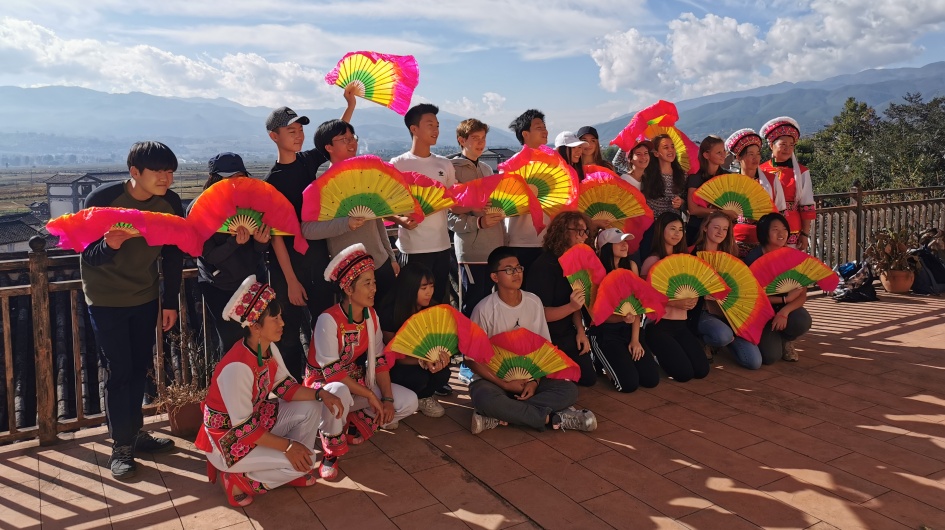 Experiencing Bai Costume Culture through Appreciating Bai Songs and Dances
Experiencing Bai Costume Culture through Appreciating Bai Songs and Dances
Your Journey’s Rewards:
Students can learn breeding and reproduction methods, understand the 4 forms of butterflies and the environmental factors that affect their survival. This study tour can enhance students' awareness of the importance of biodiversity and ecological balance, and stimulate their sense of responsibility for protecting the natural environment and participating in ecological protection. By visiting Bai dwellings, students understand the characteristics of the "three-section courtyard with a screen wall" architecture. They learn tie-dyeing production, feel the intangible cultural heritage, and exercise their hands-on ability. They deeply understand the influence of Han culture on Bai culture and form an understanding of the causes of the inclusiveness of Bai culture towards diverse cultures.
Educational Focus:
What are the characteristics of Bai costumes?
Takeaway:
Bai costumes use bold colors, mainly light colors with dark colors as a contrast, creating a strong yet bright and harmonious contrast. The embroidery is exquisite, and there are generally edged decorations, which are elaborate but not excessive. By examining the connection between their regional characteristics and the characteristics of Bai costumes, we can roughly find such a changing trend: the further south the Bai costumes are, the more colorful and elaborate the decorations are; the further north they are, the more simple and plain the decorations are. Comparing mountainous areas and dam areas, the Bai people in mountainous areas dress more colorfully, while those in dam areas are relatively simpler.
Thought Challenge:
What kind of connection exists between the layout of Taoyuan Village and the local natural environment and traditional culture?
In the morning, students visit the Sangu Water Scenic Area, where they will have in-depth access to the core area of the "Three Parallel Rivers" World Natural Heritage. They will get up close to the geographical wonder of the Jinsha River, Lancang River, and Nu River flowing parallel to each other. Through the instructor’s explanation, students can learn about the geographical concept of the "Three Parallel Rivers" and the selection criteria for World Natural Heritage sites. Then, students visit the First Bend of the Yangtze River to understand its historical stories, take a kayak, and cross the Jinsha River. Next, they visit the Red Army Memorial Hall and overlook the water intake point of the Central Yunnan Water Diversion Project to learn about its historical stories and project conditions. They then hike in the Sangu Water Scenic Area, visit the Sangu Water Power Station, and observe the impact of hydropower generation on the ecological environment.
In the afternoon, students head to Xinshan Village. He Xipeng from the Dongba family in Xinshan Village is the 34th-generation descendant of the famous Naxi Dongba "Jiu Zhila". His great-grandfather, He Cheng, was the Dongba teacher of the renowned American-Austrian scholar Joseph Rock. Students will enter the home of Teacher He Xipeng from the Dongba family. Under the guidance of the instructor, they will learn to record the 8 elements of the Naxi people (history, architecture, costumes, diet, culture, writing, art, and marriage customs). Subsequently, they will watch Dongba dances to understand Naxi Dongba culture, participate in a Dongba class, and write a piece of their own Dongba characters under the teaching of the Dongba teacher. Students will also experience Dongba paper-making, learning about the production process, culture, and characteristics of Dongba paper.
After concluding the exploration of Xinshan Village, students can proceed to Lijiang Ancient Town. As one of the famous towns on the Ancient Tea Horse Road, it has a history of over 800 years. Here, students can explore the historical civilization of the ancient town. Inside the town, there are wooden buildings with blue tiles, ancient streets with stone lanes, and small bridges over flowing water. Standing on East Street of the ancient town, one can look up and see the Jade Dragon Snow Mountain in the distance.
Your Journey’s Rewards:
During the tour, students observe how the Sangu Water Diversion Project nourishes local production and life, and can also gain a direct understanding of the practical application of hydropower generation through visiting the power station. They master the principles of hydropower generation and its impact on the ecological environment: students can learn about the basic principles of hydropower generation and its potential impact on the local ecological environment. In Xinshan Village, they experience Dongba culture, write Dongba characters, and try Dongba paper-making. Through these activities, students are guided to deeply understand the Naxi people and Dongba culture, fostering their interest in learning about ethnic history and culture.
Educational Focus:
What are other innovative uses of Dongba paper?
Takeaway:
In the past, Dongba paper was mainly used for writing scriptures. After improvement, Dongba paper is no longer limited to scriptures but is also used in embroidery, wax painting, and the production of lampshades, notebooks, artworks, etc., expanding its market.
Thought Challenge:
In the process of promoting hydropower development and cross-regional water diversion projects, how to quantify the costs of ecological protection and economic and social benefits, and establish a sustainable development model that balances ecological civilization, cultural inheritance, and regional development?
In the morning, students enter Jade Dragon Snow Mountain to conduct an in-depth exploration of glacial geology and biodiversity. First, they visit the Jade Dragon Snow Mountain Glacial Geology Museum. Under the instructor’s explanation and through independent observation, they gain a thorough understanding of the causes and characteristics of glaciers, as well as the unique geological types of the glaciers in Jade Dragon Snow Mountain. Subsequently, they hike in Blue Moon Valley, getting up close to the stunning hydrological landscape created by glaciers. During the process, students can collect relevant plants, make their own plant souvenirs by hand, and in practice, realize the significance of natural beauty and ecological protection, deeply understanding the connection between human activities, glacial melting, and biodiversity.
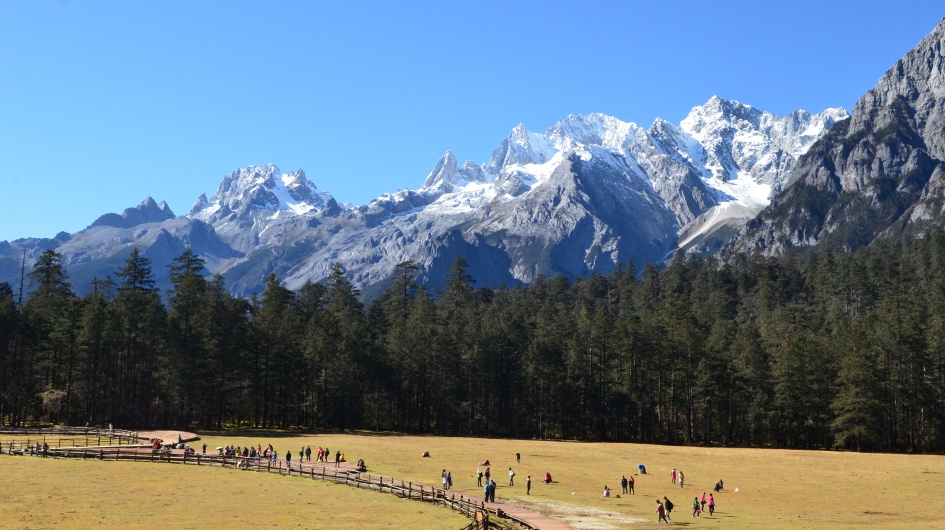 The Ecosystem of Jade Dragon Snow Mountain
The Ecosystem of Jade Dragon Snow Mountain
 Students Exploring the Ecology of Jade Dragon Snow Mountain
Students Exploring the Ecology of Jade Dragon Snow Mountain
In the afternoon, students visit Wenbi School. Through interactions with Naxi teachers and students, they will gain an in-depth understanding of the Naxi people’s history, culture, folk customs, and artistic forms. Students can also participate in characteristic courses, art exhibitions, report performances, and other sessions to experience Naxi culture in practice. In the pairing activity, students build friendships and recognize the importance of cooperation as well as the value of learning new knowledge and new cultures.
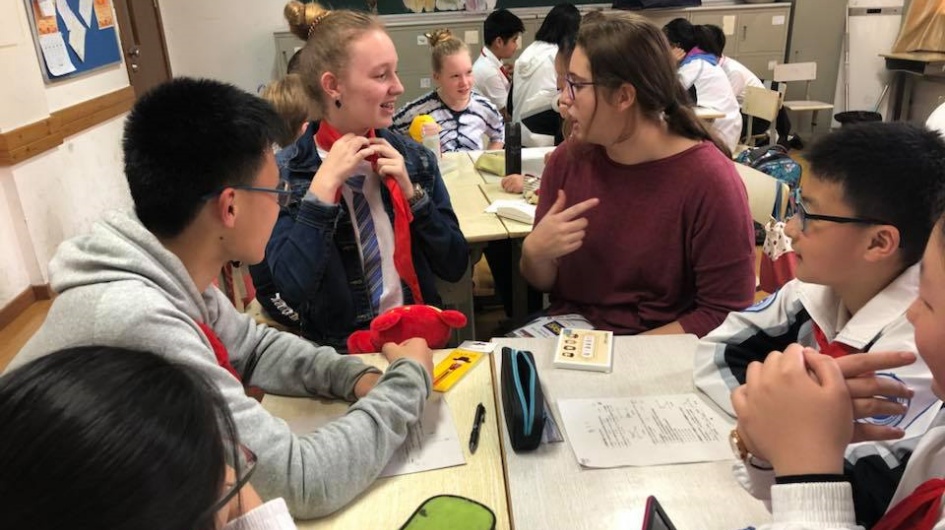 Students Engaging in Cross-Cultural Exchanges
Students Engaging in Cross-Cultural Exchanges
 Attending Special Courses
Attending Special Courses
 Student Interaction
Student Interaction
Your Journey’s Rewards:
By visiting the Glacial Geology Museum and conducting field investigations in Blue Moon Valley, students comprehensively learn about the causes, processes, and characteristics of glacial geology, and master knowledge of geological diversity and biodiversity. At the same time, their ecological observation and analysis abilities are improved, their awareness of environmental protection and sustainable development is enhanced, and they recognize the importance of protecting the natural environment. At Wenbi School, students can understand and identify the basic characteristics and traditions of Naxi culture and other cultures. Through interacting with students from this school and building friendships, they recognize the importance of cooperation and the significance of learning new knowledge and new cultures.
Educational Focus:
What measures can be taken to protect Jade Dragon Snow Mountain?
Takeaway:
The melting of glaciers in Jade Dragon Snow Mountain is mainly affected by factors such as global warming and greenhouse gas emissions from human activities. This leads to the reduction of snow mountain glacier area, changes in the hydrological environment of Blue Moon Valley, which in turn affects the living environment of surrounding animals and plants and disrupts the balance of biodiversity. Over the years, Jade Dragon Snow Mountain has also been implementing four major environmental protection projects, namely the oasis effect, cold lake effect, green transportation, and forest fire prevention. Through multiple measures, the ecological civilization of the scenic area is built. To better protect the Glacier Park, every visitor also needs to consciously abide by the scenic area regulations and take the initiative to maintain the scenic environment.
Thought Challenge:
Faced with the current situation of glacial melting in Jade Dragon Snow Mountain and the threat to biodiversity, what specific actions can individuals and society take respectively to effectively slow down glacial melting, protect biodiversity, and achieve the sustainable development of eco-tourism in Jade Dragon Snow Mountain?
In the morning, arrive at the Jinning Flower Base and start the courses related to the flower industry chain. Under the instructor's explanation, first gain a comprehensive understanding of the basic concepts and development status of Yunnan's flower industry chain. Subsequently, under the leadership of professional teachers, conduct an in-depth visit to the flower base through role assignment, understand the functions of relevant links in the flower industry, and personally experience the operation process of the flower industry chain. There is also an opportunity to participate in the flower auction session, experience the work of an auctioneer immersively, and deeply feel the complete context and unique charm of the flower industry from the field to the market. After the course, depending on the schedule, the driver will send you to the airport, returning with a full load of knowledge.
Your Journey’s Rewards:
By visiting the flower base, understand the basic concepts and current situation of Yunnan's flower industry chain. Master all links of the flower industry from planting to sales, including the relevant operations and professional knowledge of water and fertilizer management, greenhouse investigation, picking, refrigeration, sorting, packaging, packing and numbering, transportation and promotion. Understand the processes and rules of flower auctions, participate in flower auctions, and experience the work of an auctioneer.
Educational Focus:
What are the key links in Yunnan's flower industry chain, and what are the specific operations and functions of each link?
Takeaway:
Yunnan's flower industry chain covers multiple key links such as planting, picking, refrigeration, sorting, packaging, transportation, promotion and auction. Water and fertilizer management and greenhouse investigation in the planting link provide a good environment for flower growth; refrigeration after picking can extend the freshness period of flowers; sorting and packaging can enhance the commercial value of flowers; transportation ensures that flowers are delivered to the market in a timely manner; promotion helps flowers open up sales channels; auction is an efficient way of flower trading, which can efficiently match supply and demand, improve transaction efficiency, and expand domestic and foreign markets.
Thought Challenge:
In the development of Yunnan's flower industry chain, how to further integrate resources in all links, enhance industrial competitiveness through technological innovation and model innovation, while taking into account ecological environmental protection and industrial sustainable development?
This tour is suitable for: Students, Teachers, Schools, Educational Groups, Families, Educational Travelers
What’s Included
- Experienced tour guides
- Entrance fee to all spots listed in the itinerary
- Well selected hotel accommodation
- Expert drivers and comfortable vehicles with air-conditioning
Hotel Options:
- Kunming Recommended Hotel: Atour X Hotel Kunming
- Dali Recommended Hotels: Dali Shi'an Floating Seaview Homestay; Jia Li Hotel
- Lijiang Recommended Hotel: Jixiangyuan International Hotel(Lijiang old town)
Wechat & WhatsApp: +86-13471279378